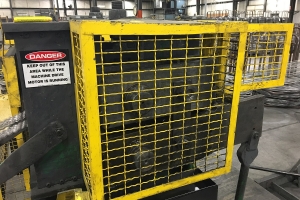Recent case shows OSHA off-base on some lockout violations
While appropriate use of lockout/tagout is critical to safe operation, OSHA sometimes has been going too far in ramping up lockout enforcement, as shown in a recent case where a violation was withdrawn.
Companies who have been hit with lockout violations should check to see if they too have been inappropriately cited.
The issue is the definition of the term “setup.” OSHA said in a 2002 bulletin that the lockout/tagout standard applied to the control of hazardous energy “when employees are involved in service or maintenance activities such as constructing, installing, setting up, adjusting, inspecting, modifying, and maintaining or servicing machines or equipment.”
The standard only applies, the bulletin said, when “the unexpected startup, energization, or the release of stored energy could cause injury.”
The problem is that many employers and employees casually use the term “setup” when, in fact, they are performing a tool change that is routine, repetitive and integral to the operation. This type of activity actually falls under OSHA’s established exemption for minor servicing.
OSHA should recognize that many, if not most, tool change tasks require intentional movement of slides, fixtures and devices. Pushing control buttons intentionally to move a machine part is the exact opposite of “unexpected”.
Lockout citation withdrawn
One of our clients recently received a lockout citation from OSHA for what were actually minor servicing activities. But after our report on the setup issue was presented as technical evidence, OSHA withdrew the lockout citation, thus avoiding a costly hearing.
We’re also working with other companies to assess their lockout/tagout procedures. We often employ a methodology recognized by OSHA in the late ‘90s called Task Based Risk Assessment to determine when the “minor servicing” exemption applies. Task Based Risk Assessment is now a part of the ANSI B11 family of general industry safety standards. It is simple and easy to learn, and will allow a proper level of safety with minimal downtime for tool change.
For more information on how to assess which of your activities require lockout and which do not, contact FDRsafety.



1 Comment
Having an ECP in place is just the first step in ensuring that your company is compliant with OSHA’s regulations regarding LOTO. Enforcement and constantly ensuring that your ECP is being followed is the next logical and more difficult step to achieve. Making sure that it is enforced however can help your company save lives as well as avoid the hefty fines that come with such lock out violations.